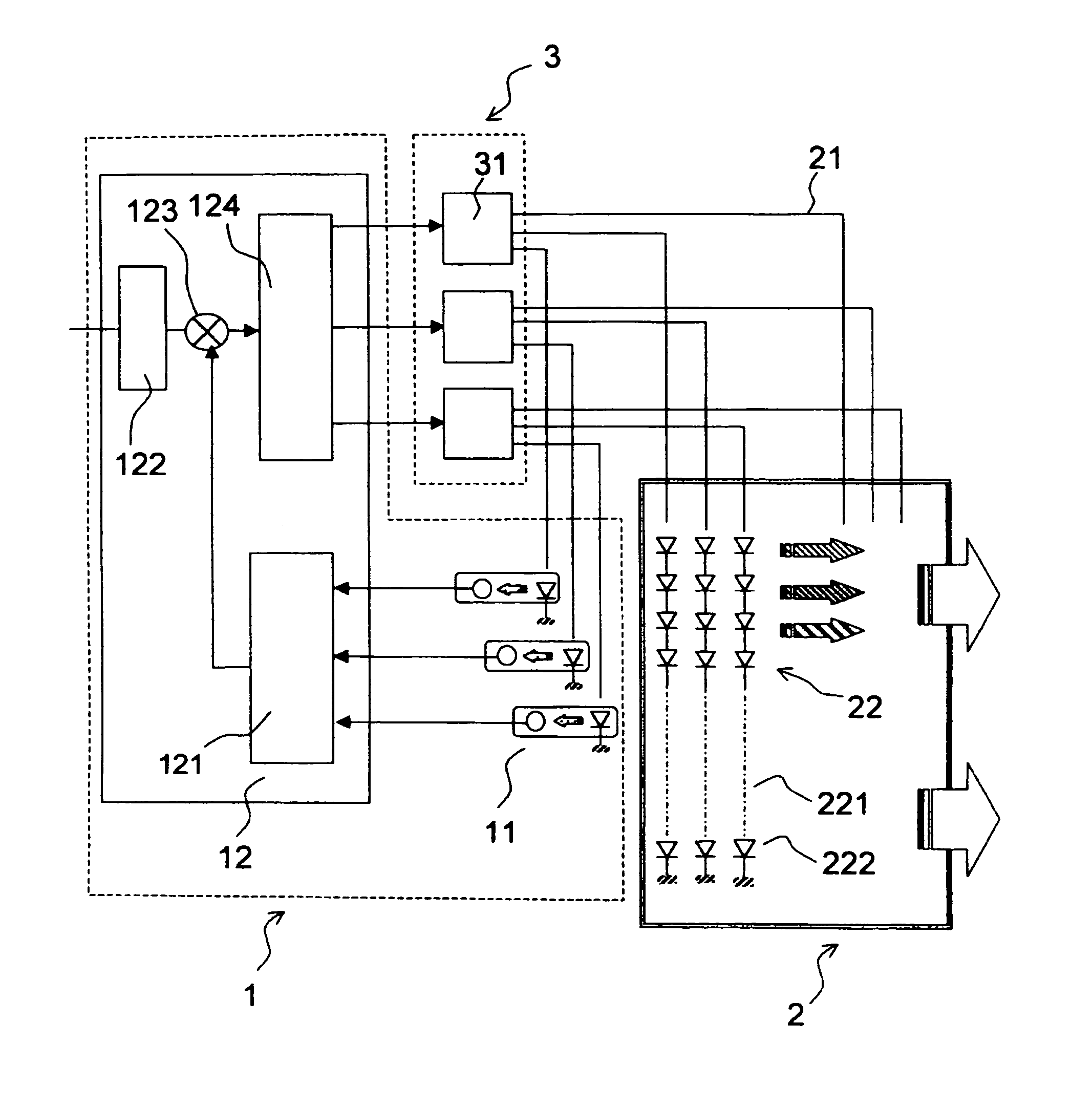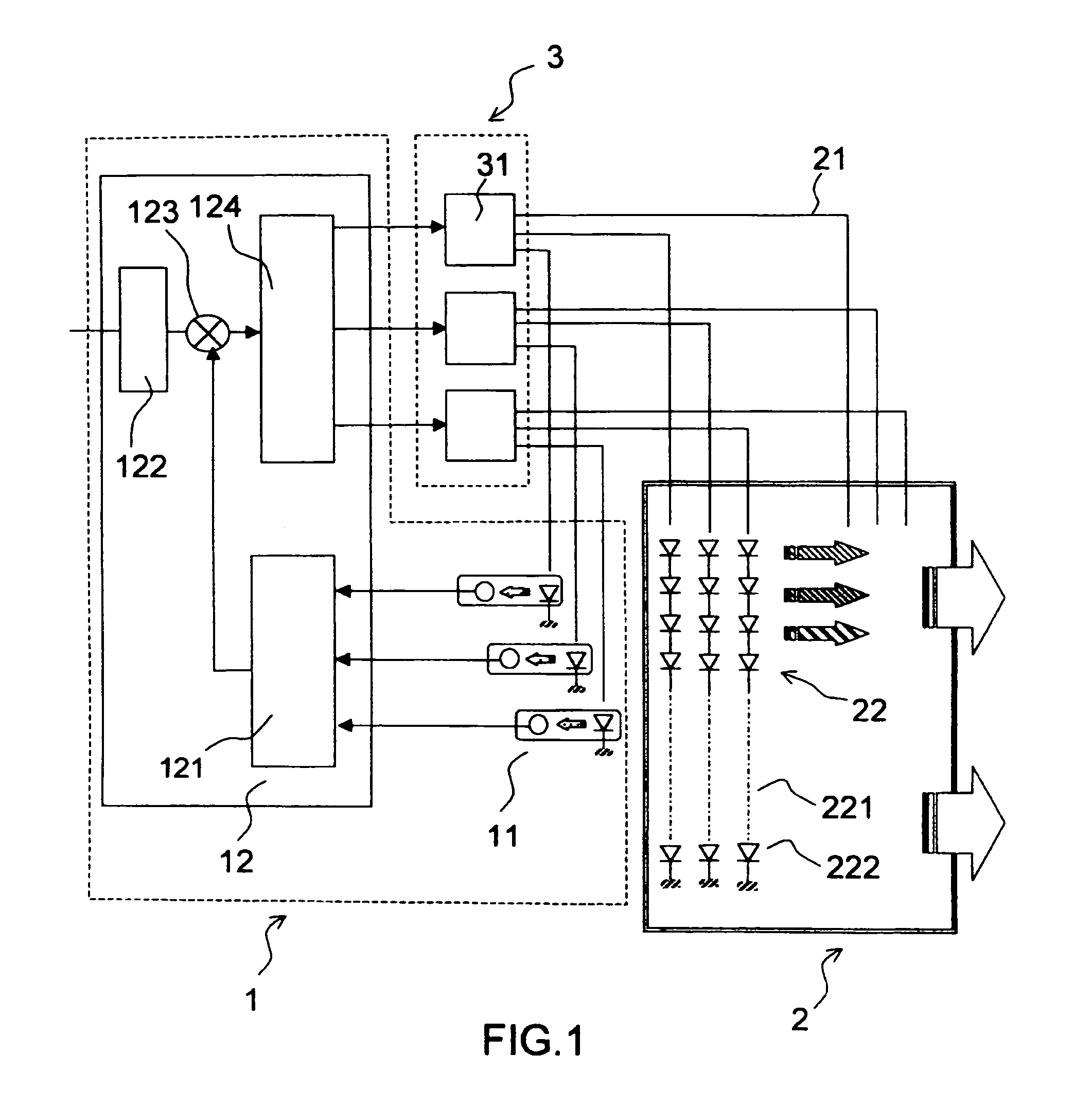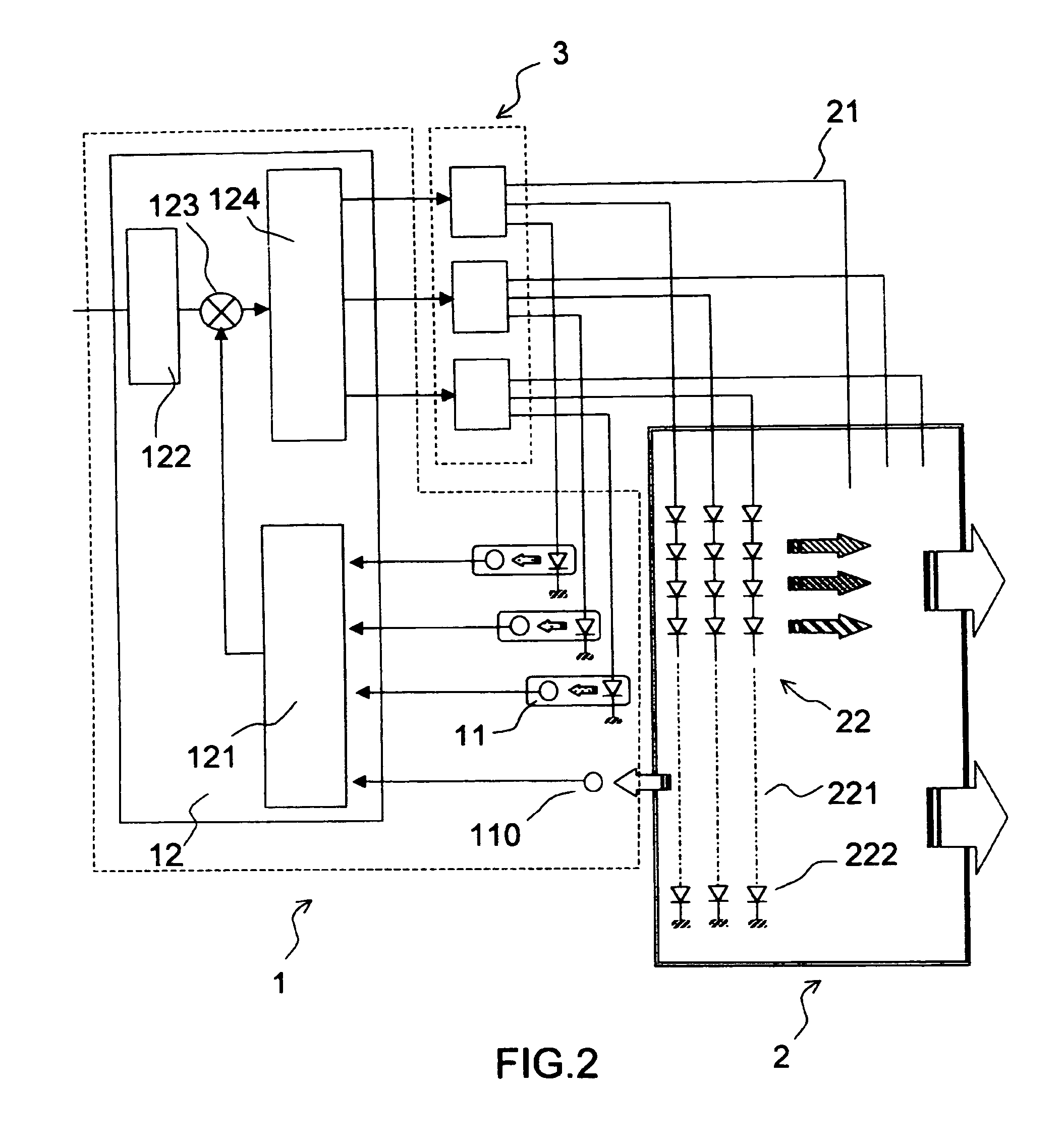Feedback control device for photo-colorimetric parameters for a light box with color LEDs
- Summary
- Abstract
- Description
- Claims
- Application Information
AI Technical Summary
Benefits of technology
Problems solved by technology
Method used
Image
Examples
Embodiment Construction
[0065]FIG. 1 shows a general diagram of an electronic assembly that includes the feedback control device according to the invention. The assembly comprises three parts: the light box 2, the feedback control device 1 and a unit comprising the electronic control circuits 3 for the arrays of light-emitting diodes. Each electronic control circuit comprises several control modules 31. Each electronic module 31 controls one type of diode.
[0066]The light box comprises several arrays 22 of diodes as shown in FIG. 1. Each array comprises light-emitting diodes of the same type. Each array 22 is formed from several branches 221 that are connected to an electronic control module 31 via electrical links 21, each branch 221 comprising LEDs 222 of the same type connected in series. Of course, other arrangements are possible (especially matrix arrangements of the LEDs). The light-emitting diodes 222 of the various arrays 22 emit in different spectral bands. Conventionally, to obtain white light, it...
PUM
 Login to View More
Login to View More Abstract
Description
Claims
Application Information
 Login to View More
Login to View More - Generate Ideas
- Intellectual Property
- Life Sciences
- Materials
- Tech Scout
- Unparalleled Data Quality
- Higher Quality Content
- 60% Fewer Hallucinations
Browse by: Latest US Patents, China's latest patents, Technical Efficacy Thesaurus, Application Domain, Technology Topic, Popular Technical Reports.
© 2025 PatSnap. All rights reserved.Legal|Privacy policy|Modern Slavery Act Transparency Statement|Sitemap|About US| Contact US: help@patsnap.com



